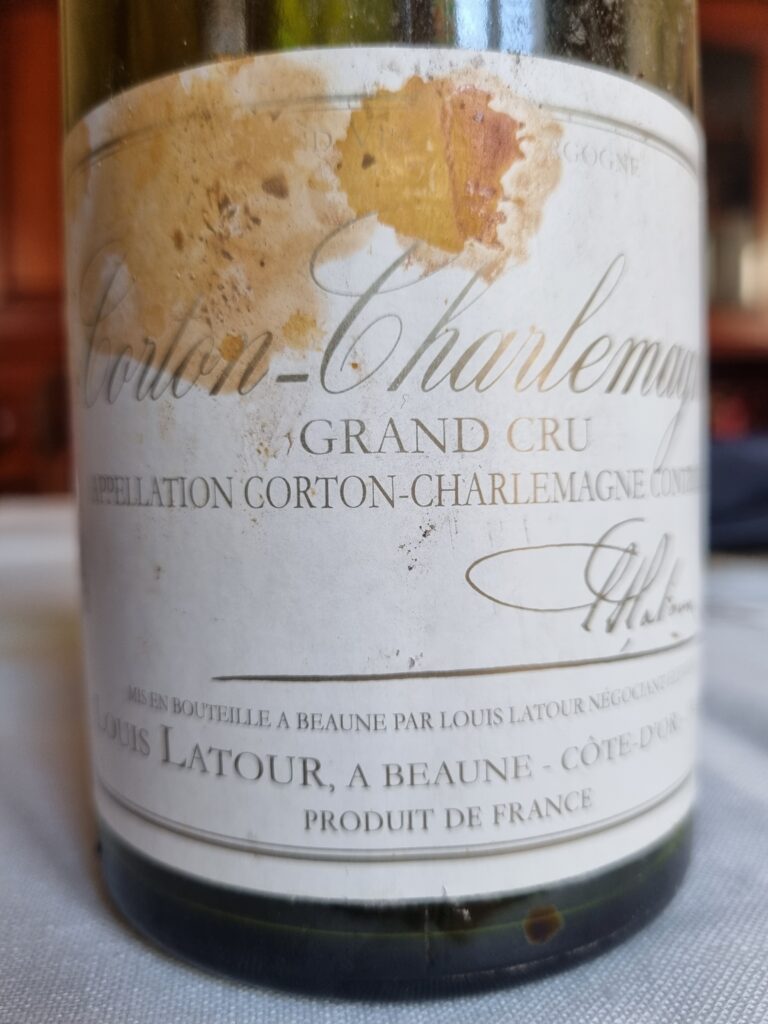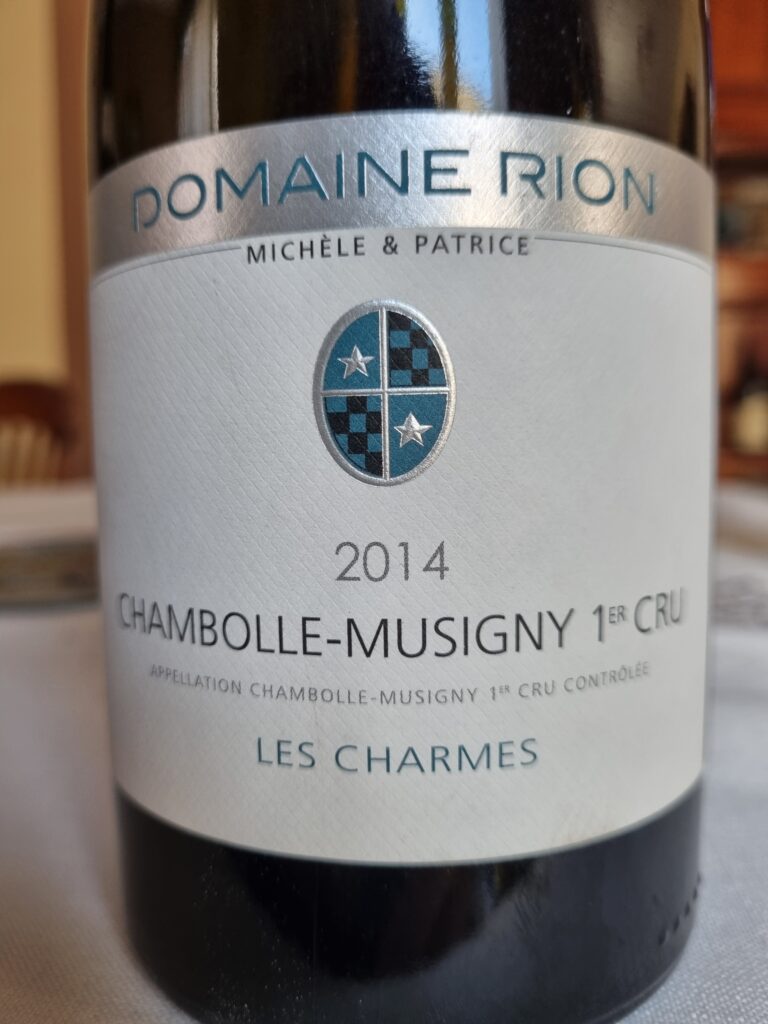Sometimes, there’s a silly sniping match between those of us who prefer Bordeaux to Burgundy or vice versa. In fact, insofar as such a conflict exists, it is really quite absurd. And there is no reason whatsoever one cannot like both.
That is certainly so with me.
Seen from Bordeaux, Burgundy is by no means a wine be denigrated. In fact, it is largely an unknown element, and the good stuff is hard to find locally. The white wines are acknowledged to be unequalled.
Last Saturday my wife and I put on a tasting dinner accompanied by wines from the Côte d’Or.
The food consisted of a salade tiède of scallops in a Caribbean-style sauce followed by roast capon.
Many wine dinners start off with Champagne so, being traditional and predictable, I served

Champagne de Souza, Caudalie, Blanc de Blancs grand cru was the non-vintage version purchased about 5 years ago. Consisting of 100% Chardonnay (50% from Avise) and partially aged in oak casks, this cuvée has a good reputation. While it was certainly very dry, clean, and mineral, I came away a little disappointed. It lacked oomph and fruit.
The next one up, 2009 Champagne Georges Vesselle, was a very different animal. At age 15 it was in its prime and proved to be in a rich, aromatic, and ever-so-slightly oxidized mold. The nose was exquisite and the wine shone on the palate. I must seek out this producer again.
Two white Burgundies followed.


2018, Beaune blanc1er cru Les Grèves, Caroline Morey had a quintessentially Burgundian nose of hazelnut and matchstick that showed extremely well at age 6. The wine was slender, bright, and fresh on the palate, a very well-crafted white wine to enjoy now or in a few years.
2015 Corton Charlemagne, grand cru, Louis Latour was a heavy hitter. And I say heavy partly because of the weightiness on the palate. The style here was old-fashioned and big. While the Beaune Blanc may have had a more expressive nose, the Corton Chalemagne had breadth, length, and gravitas. Very enjoyable now, the aromatics would probably benefit from further ageing.
Then it was on to the reds:


2015 Chassagne Montrachet rouge, 1er cru Baudriotte, domaine Jean-Claude Ramonet: Famous for his white wines, this producer is evidently no slouch either when it comes to reds.
It is much to the credit of producers in Chassagne like Ramonet who maintain red wine varieties on soil that is well-suited to them rather than to plant more profitable Chardonnay.
Anyway, this wine was “medium” in many ways: color, bouquet, and palate. It was also, in my opinion, time to drink up. In short, I would say this was in the “good to very good” category.
2014 Chambolle Musigny 1er cru Les Charmes, Domaine Patrice Rion proved to be in another style. While there were engaging black fruit aromas on the nose, the wine was tight, ungracious, and curiously tannic on the palate. The balance was such that more cellaring will not even things out significantly.

2011 Echézeaux, grand cru, Domaine Emmanuel Rouget. Ah, a grand cru from a hot shot producer, nephew of the famous Henri Jayer! This was purchased at a tenth of the going price…
2011 is not such a great year in Burgundy, but the pedigree of this wine showed through with a silky texture and fine breeding. This was a feminine Vosne of considerable beauty and drinking well right now. The aftertaste was marvellous and it ended the flight of reds with a bang and convinced those of us unfamiliar with red Burgundy that there is much good there J.

We had a 1983 unfiltered Late Bottled Vintage Port from Ramos Pinto with dessert. I had bought several bottles of this at a knock-down price and this was my last one. It provided ticked the right boxes and no one came close to guessing its age, or the style of Port.
